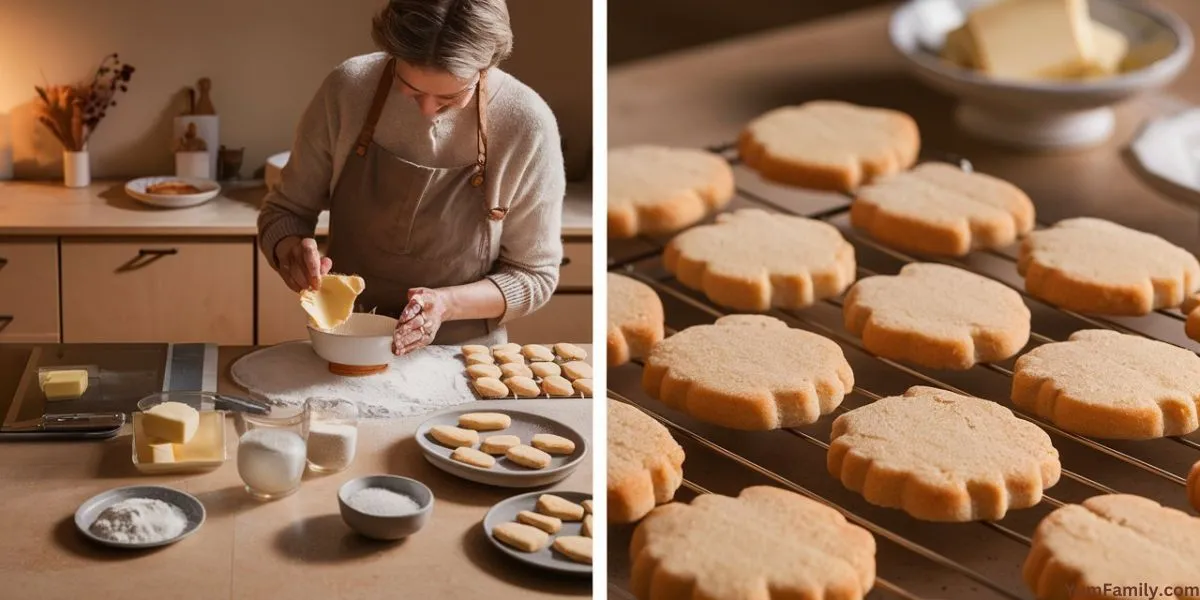Introduction
Shortbread cookies, a delightful treat with a rich history tracing back to Scotland, captivate all who taste them. The secret to their success? Simplicity and mastery of basic techniques. Perfectly baked shortbread boasts a crumbly texture, buttery flavor, and a golden-brown finish, often leaving one craving for more. Understanding the importance of key ingredients and techniques can turn even a novice baker into a shortbread connoisseur.
Ingredients and Their Importance
Butter: The Backbone of Shortbread Cookies
The choice of butter can significantly affect the flavor and texture of your cookies. While unsalted butter is often recommended for its purity of taste, salted butter can enhance the flavors if adjusted correctly in the recipe. The quality of butter is crucial; higher fat content leads to a richer and more tender cookie.
Sugar: Sweetness and Texture
Choosing between granulated and powdered sugar can influence the texture of your shortbread. Powdered sugar will typically result in a finer, softer texture, while granulated sugar gives a slight crunchiness.
Flour: Structure and Stability
All-purpose flour works well for shortbread, providing the right structure without making the dough too tough. However, experimenting with specialty flours like cake flour can yield even softer results.
The Science of Shortbread – Role of Flour, Butter, Sugar: Discover how these ingredients work together to create the perfect texture and flavor in shortbread cookies.
Optional Ingredients: Enhancements and Variations
Adding vanilla extract, chocolate chips, or nuts can introduce delightful variations to the classic shortbread recipe, catering to a range of tastes and occasions.
Essential Techniques
Creaming Butter and Sugar: The Key to a Smooth Texture
Creaming butter and sugar until light and fluffy is foundational. This process incorporates air and gives the dough its delicate texture.
Sifting Flour: Ensuring a Lump-Free Dough
Sifting not only removes lumps but also aerates the flour, making it easier to mix into a smooth dough without overworking it.
Mixing Dough: Achieving the Perfect Consistency
It’s crucial to mix the dough just until it comes together to avoid gluten development, which can make the cookies tough.
Chilling the Dough: Maintaining Shape and Structure
Chilling is essential as it solidifies the fat in the butter, reducing spreading during baking and helping maintain the cookie’s shape.
Shaping and Even Baking Shortbread Cookies
Rolling Out the Dough: Achieve Even Thickness for Uniform Baking
To ensure that your shortbread cookies bake uniformly, it’s crucial to roll the dough to an even thickness. Consistent thickness will help each cookie bake at the same rate, avoiding some cookies being overdone while others are just right.
Cutting Shapes: Creative and Precise Baking
Using cookie cutters or hand shaping allows for precise and creative shapes, contributing to an even baking process. Ensuring each piece is similar in size helps in maintaining not just aesthetic uniformity but also consistent baking.
Optimizing Baking Times and Temperatures for Even Baking
Finding the right baking time and temperature is crucial for even baking. Shortbread cookies typically require a lower temperature, around 300°F (150°C), which helps them bake evenly without the edges burning before the center cooks through.
Cooling: Ensuring Even Texture and Flavor
Allow the shortbread cookies to cool on the baking sheet for a few minutes before moving them to a cooling rack. This gradual cooling process helps prevent the cookies from becoming too brittle and maintains an even texture and flavor throughout.
Troubleshooting Common Issues
Cookies spreading, dry textures, or uneven baking are common issues. Adjusting the amount of butter, baking time, or even the type of baking sheet can help resolve these problems and achieve perfect shortbread cookies.
Flavor Enhancements and Variations
Expanding the flavor profile of shortbread cookies with extracts, zests, spices, nuts, chocolate, or dried fruits can transform them into a gourmet experience. Dipping in chocolate or decorating with icing can also add visually appealing and tasty elements.
Explore this Shortbread Cookies with Orange and Cranberries recipe for inspiration.
Storage and Serving Tips
Store shortbread cookies in an airtight container at room temperature to maintain their texture. Serving them with coffee, tea, or alongside ice cream makes for delightful pairings.
FAQs
- Why are my shortbread cookies spreading? Check the butter content and chilling time.
- Can I use margarine instead of butter? While possible, butter is recommended for flavor.
- How do I make gluten-free shortbread cookies? Substitute the all-purpose flour with a gluten-free blend.
- What’s the best way to decorate shortbread cookies? Use icing, melted chocolate, or edible decorations.
- How can I make my shortbread cookies more flavorful? Add extracts, spices, or zest for an enhanced taste.
Conclusion
The secret to making exceptional shortbread cookies lies in understanding and perfecting simple ingredients and techniques. Experimentation and personal touches not only bring out the best in your shortbread but also make the baking experience truly rewarding.


3 thoughts on “What is the secret to making good shortbread cookies?”